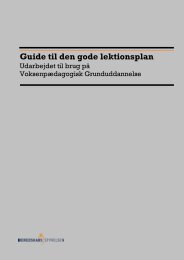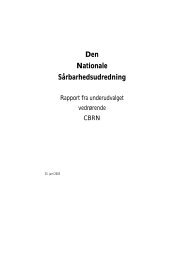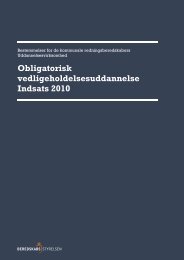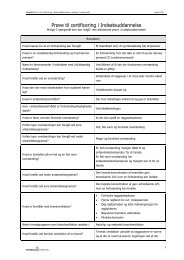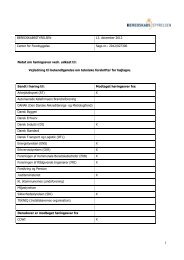Comprehensive Preparedness Planning
Comprehensive Preparedness Planning
Comprehensive Preparedness Planning
You also want an ePaper? Increase the reach of your titles
YUMPU automatically turns print PDFs into web optimized ePapers that Google loves.
Crisis management plansCore task 3: Coordination of actions and resourcesCrisis management never takes place in a vacuum. There will always be a need for coordinationof actions and resources – both within the organisation and vis-à-vis external partners.As regards the internal coordination, the organisation’s crisis management plan should include:••Procedures for generating a collective overview of ongoing actions and resource allocationat the central level and in decentralised units. To this end, the organisation may for exampleuse a resource database, survey, or list to sum up personnel and equipment that are eitherdeployed, ready for immediate deployment, or form non-activated reserves. Such a resourceaccount is useful in its own right, and will at the same time contribute to the organisation’swork when formulating a combined situation picture.••Instructions for how employees and other resources can be transferred between differentunits during a crisis (e.g. via secondments). In this connection, its is important to considernot only the crisis management needs, but also the fact that the “basis organisation” – independentlyof the crisis – must uphold other critical functions at an acceptable level, whilstthe crisis management takes place (business continuity planning).••Principles for decision-making competence, including how such competence is delegatedfrom the strategic to the operational level. The people responsible for the operational responseshould, as a general rule, be authorised to allocate available resources as they seefit. They should have a mandate to make all operational decisions, as long as the crisis managementunit is kept informed. The organisation may want to adopt some guidelines for howto side-step normal decision-making procedures, if these have the potential to inhibit crisismanagement in situations that require urgent decision-making.••Procedures for authorising executives to obtain and allocate extraordinary large sums, sothat crisis managers are not forced to act on an uncertain or insufficient financial basis.As regards the external coordination of actions and resources, the organisation’s crisis managementplan should primarily consider:••Which entities the organisation will usually have to coordinate with during crises, and how toinitiate bilateral cooperation immediately from the onset of a particular crisis.••How to find out which actions other organisations are planning or have already set in motionto deal with the crisis. An overview of this improves the organisation’s chances of optimisingits own resource use, and makes it easier to evaluate if specific resources can be recalled orreallocated without weakening the collective emergency response.••How the organisation intends to handle requests from others for emergency assistance, andwhat the procedure is in case the organisation itself has to ask for outside assistance.• • Which particular joint crisis management staffs, if any, the organisation must be able to participatein, who will function as liaison officers, and what their mandate will be.35



